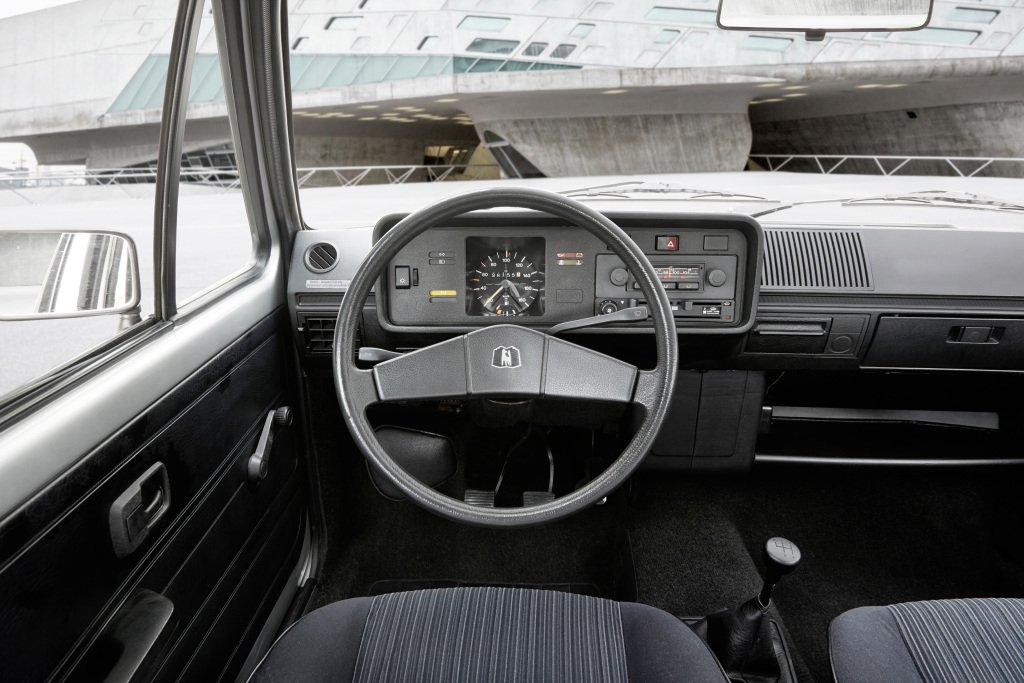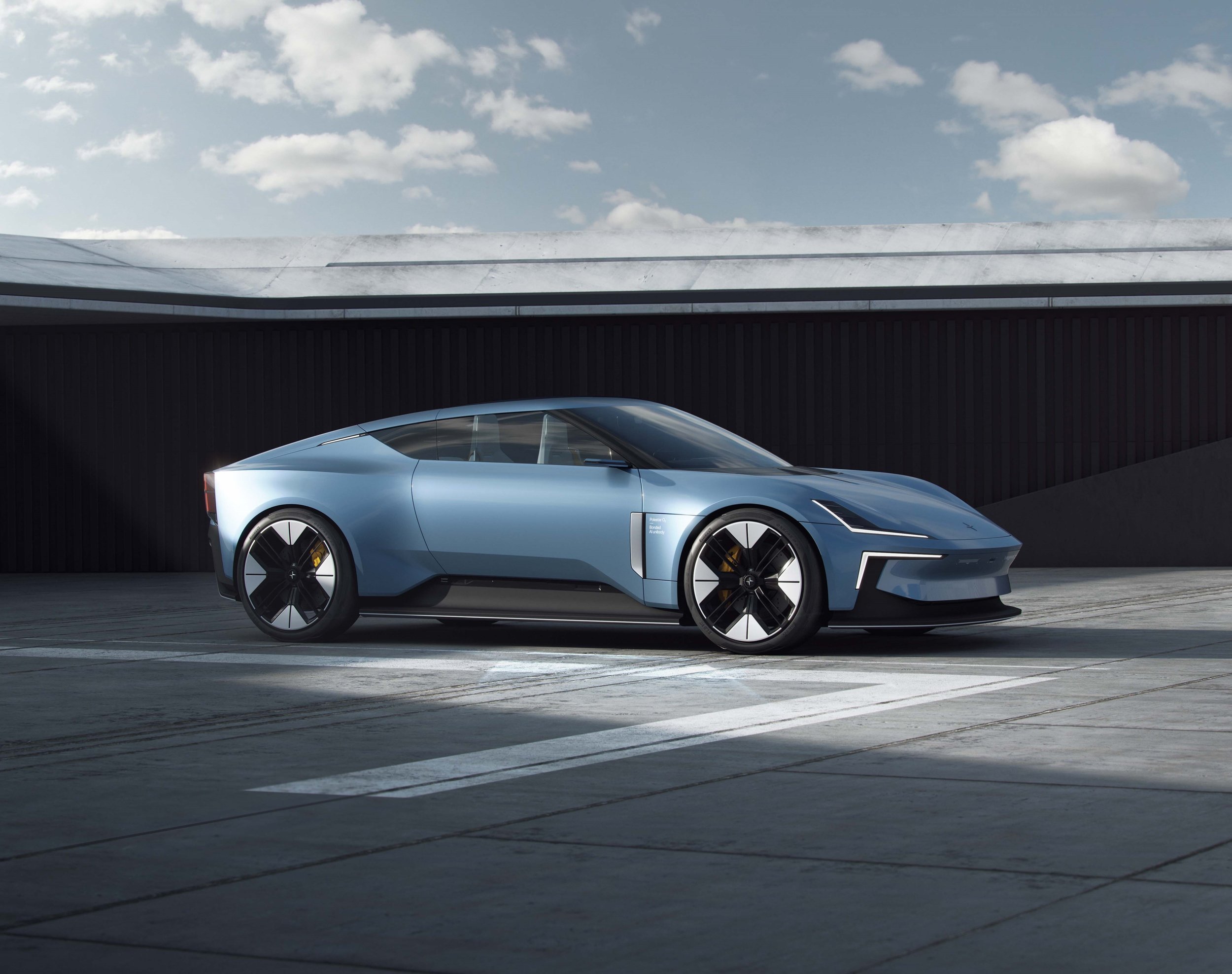Interior Evolution: VW Golf
Taking a look inside eight generations of Volkswagen’s staple model
(all images © Volkswagen AG)
In this first of a series of articles, DFT focuses on the subject of interior design.
Inevitably, most automobiles are benchmarked, rather than benchmarks. It goes without saying that the VW Golf is among those few exceptions - having acted as a benchmark not just within the industry, but socio-culturally (Generation Golf) as well. It’s become such a European staple that it seems not just overly familiar, but even overanalysed already.
In the context of car interior design, this issue applies, as well - what with many Europeans and most Germans of a certain age having learned to drive behind the wheel of one generation of Golf or another, and hence having gauged their understanding of ergonomics and quality courtesy of the quintessential Volkswagen.
Despite having been priorities since the first Golf was created during the 1970s, simple ergonomics and superior quality have manifested themselves differently over the decades and generations of Golf. The most elaborate expression of ‘Golf-ness’ - a sophisticated type of sturdiness - can hence be found and studied inside each model.
In the first generation’s case, this requires an abandoning of hindsight to begin with - for from today’s perspective, the Golf I’s cabin seems barren to the extreme. Unlike its Giugiaro-styled exterior - whose delicately balanced dose of Italian origami pizzazz prevents it from appearing utterly austere -, the Golf’s interior evokes the spirit of ‘70s Wolfsburg in all of its grey Zohnenrandgebiet mirthlessness.
The very few instruments and controls present are logically placed, just as materials are less flimsy than the ‘70s norm - but little effort was made to arrange them by means of a strong graphical theme, or to add a whiff of cosiness through cheerful fabrics (as was practiced at the Audi sister brand at the time). The switchgear appears to completely consist of off-the-shelf items that do little to differentiate the Golf - which would’ve been put into sharp relief once the Fiat Ritmo, with its less solid, but infinitely more visually pleasing, contemporary product design-inspired dashboard, was unveiled in 1978.
While hardly stylish, the second-generation Golf made inroads into the field of perceived quality. The dashboard’s basic layout was carried over, but complemented with several new features that were, once again logically arranged. All switchgear grew in size, gaining a chunky appearance in the process that, alongside the very solid-feeling leather-look plastics used for the dashboard corpus, played a significant role in affirming the Golf’s quality credentials. The fabrics used tended to feel somewhat plusher too, making for an overall environment that was still hardly elegant, but far less austere than before. It certainly perfectly matched Western European petit bourgeoise tastes - far more so than the likes of the Renault 11, whose hi-tech aesthetics and flimsy plastics would’ve aroused suspicion among a conservative clientele.
For the Golf MkIII, the previous generation’s winning formula wasn’t completely abandoned, but amended to a considerable degree. Within a similar space as before, controls were reorganised - echoing the trend towards tall, Saab-like dashboard architecture during the early ‘90s, as exemplified by the BMW E36 as well. The dashboard’s shapes were considerably softened, in keeping with fashion at the time, whereas the leather-look plastics remained - albeit in less robust a finish and juxtaposed with flimsy-feeling, shiny plastic trim.
In terms of user-friendliness, the MkIII’s cabin was difficult to fault. But it did lose the predecessor’s aura of indestructibility, just as the conscious effort to add some contemporary style to the Golf formula only seemed to highlight the model’s inherent middle-class flair.
After this misstep, the next generation of Golf turned out to mark a watershed moment - not just for Volkswagen or the Golf, but the entire car industry. It also happens to be among the very few cars that are remembered for their interior design to the same extent as their exterior.
The MkIV Golf hence marked the gravest change of direction for this model at the time. Not just with regards to its success and influence, but also because its cabin was more different from its predecessor’s than had been the case before. In contrast to the contemporary competition - specifically the Ford Focus and Fiat Brava -, the Golf’s interior design aesthetic aimed for a timeless appearance. Rectangular buttons in a sober arrangement immediately differentiated the VW from its more playfully designed competitors. At the same time, its appealing materials - including the first implementation of soft-touch coating & plastics in this class - and precise manufacture ensured its orderly appearance didn’t result in an austere flair. Having the centre console angled more steeply towards the driver, in addition to a lower dashboard architecture than in MkIII’s case, also made for a more spacious-feeling environment. Only the blue instrument lights were an obvious gimmick - that didn’t make it past one VW model generation, either.
Regularly lit instruments notwithstanding, the following MkV generation’s interior turned out to be less satisfying. Centre console switchgear had moved upwards, which was sensible enough, given the growing popularity of sat-nav systems and the consequential need to provide space for monitors high up. But the quality of materials seemed to have been downgraded in surprisingly obvious a manner - despite the generous use of metal effect details on the switchgear and the main dials.
The MkVI-generation - a thorough facelift, rather than an all-new car - continued this trend, albeit less clumsily executed. This was symbolised by the far more convincing metal effect details, which didn’t appear to be made of plastic pained silver. This and other detail improvements resulted in a more sophisticated, but also busier-looking dashboard, whose tactile qualities marked a return to MkIV-form.
Given the exponential increase in equipment, the clean appearance of previous generations would’ve been hard to match. It is accordingly hardly surprising that the MkVI cabin marked the point when Golf cabins left behind their minimalist German design roots, in favour of an upmarket, yet somewhat cluttered appearance.
The following generation of Golf was once again an all-new design, which carried over the MkVI’s basic layout, albeit arranged in such a way as to create a more driver-orientated appearance. Trim variations were also expanded considerably, with convincing brushed metal-effect making a prominent and shiny black plastic a somewhat diffident first appearance.
The latter material has since gained visual dominance in the current, eighth generation of the VW Golf. This model marks as clear a break within Golf history as the MkIV-generation did - for completely different reasons, however. Two pillars of Golf interior design have been all but abandoned: ease of use and superior perceived quality. The layout of the dashboard simulates simplicity that is not reflected by its (arbitrarily) touch-sensitive controls, which are ergonomically highly dubious and visually unattractive, as their high-gloss surfaces quickly collect greasy fingerprints. The gimmicky full-width air vent fails at drawing attention away from the lacklustre materials, which sound hollow and quickly attract scratch marks. The contrast between this insubstantial dashboard and, for example, the immensely more refined Mazda3’s would’ve been hard to imagine just a model generation ago.
It shall be interesting to see whether some traditional Volkswagen virtues will be applied again to any future Golf. For the time being, however, the status quo is that a design lineage has been broken - the price for some highly obvious cost-cutting. Whether this is a price worth paying, only time will tell.




















Car interior designer who created some of the most significant cabins of all time, most notably the Porsche 928’s